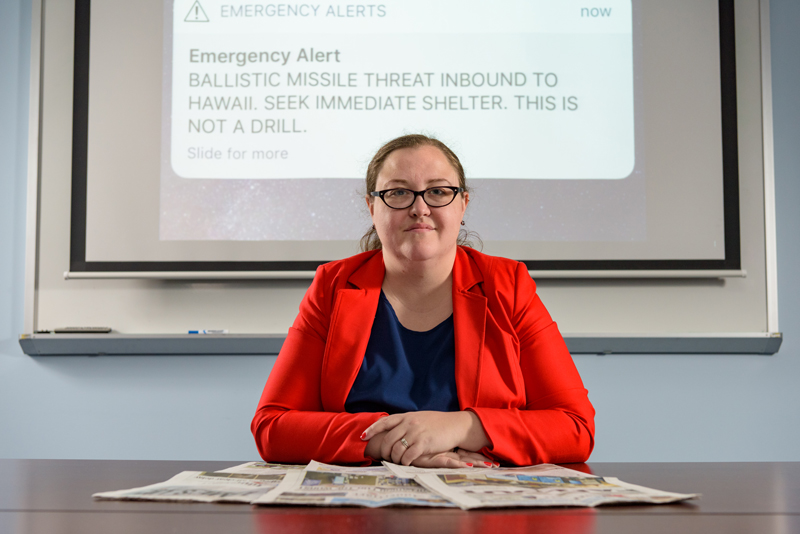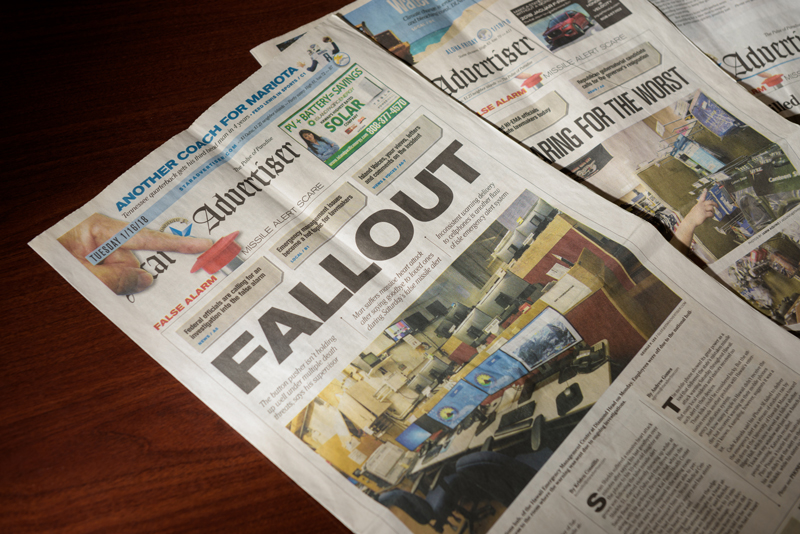


False-alarm lessons
Photo by Evan Krape February 08, 2018
Disaster researchers study response to Hawaii missile alert
The University of Delaware’s Disaster Research Center (DRC) often studies how individuals react to a coming hurricane—how they get warnings and what they do about them—during a period of preparation that can last for days as the storm slowly advances.
On Jan. 13, by contrast, residents and visitors in Hawaii were alerted to an impending missile attack for which they had perhaps 20 minutes to take action. After 38 minutes, they were told the alert was a false alarm, triggered by an emergency worker’s mistake.

“We know a lot about what people do in terms of a hurricane, how they make decisions on such things as whether to evacuate, but this incident in Hawaii was different,” said Tricia Wachtendorf, DRC director and professor of sociology. “We wanted to study how it fit with our other research projects while also offering a chance to learn something new.”
Two days after the false alarm, Jennifer Trivedi, a postdoctoral researcher with the DRC, arrived in Hawaii and began interviewing people about those 38 minutes when many believed they were under attack.
While many residents and tourists reported being frightened during the incident, Trivedi said the most common reaction was confusion during the alert and frustration after learning that it had been issued in error.
“I was somewhat surprised at how calm people were,” Trivedi said. “Some believed it was an actual attack at the time, and some didn’t think it was real, but almost no one used the word ‘panic.’ ”
What people did report, she said, was a sense of confusion. In spite of recent global tensions, particularly involving North Korea, most people told Trivedi that they didn’t have a clear idea of what action they should take in case of an actual missile attack.
“The main theme was that there was a lack of information,” she said. “Where should they seek shelter? Should they pick up their kids from school? Are there public fallout shelters? They realized that they didn’t know the answers to these kinds of questions.”
Trivedi also attended a public emergency-management meeting. It had been scheduled before the false alarm, but the 100 or so residents who attended had questions centering on that event.
She and Wachtendorf are examining the data she gathered and plan to prepare some quick-turnaround reports geared to academics and practitioners.
“I’ve been hearing from various experts that this is an opportunity to learn about gaps that exist in the emergency preparedness system,” Wachtendorf said.
The incident has already led to the firing of the worker who broadcast the warning, the resignation of Hawaii’s state emergency manager and changes in the procedures for issuing alerts in the future. But helping individual residents prepare for this kind of disaster appears to be another key step, Trivedi said.
“A lot of people told me that this pushed them to get more information about preparedness, to think about what to do in a real emergency,” she said. “They’re frustrated that they didn’t have answers, and they want to get that information now.”
Contact Us
Have a UDaily story idea?
Contact us at ocm@udel.edu
Members of the press
Contact us at 302-831-NEWS or visit the Media Relations website

